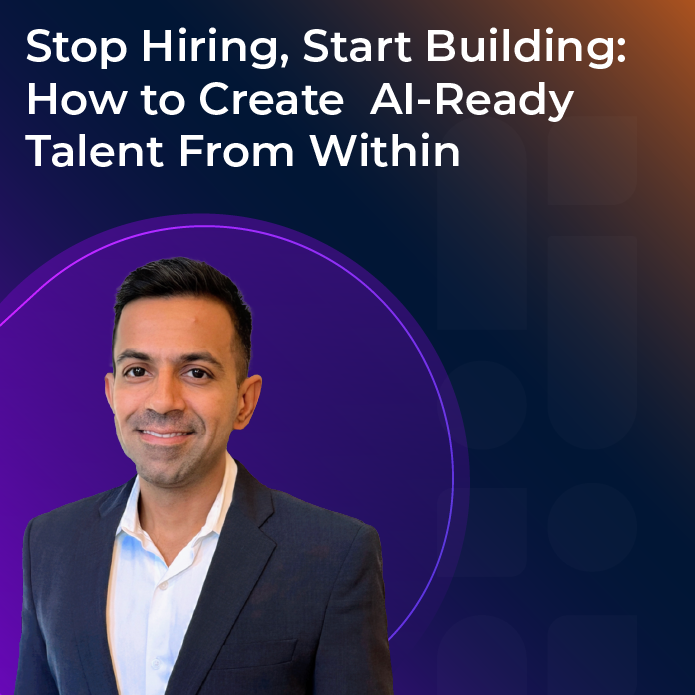Insights

Blog
Diversity, Equity, and Inclusion (DEI) are critical for innovation, yet progress in STEM fields remains limited. With the workforce predominantly white (64%) and women representing only 35%, outdated hiring practices are a major barrier. This blog explores how businesses can align DEI goals with hiring processes by addressing the "tech skills gap" myth, supporting nontraditional candidates, and measuring employee value beyond day one. Discover strategies to expand talent pipelines, embrace diverse backgrounds, and drive societal change through inclusive hiring.

Diversity, Equity, and Inclusion have reached a turning point: Organizations & companies have recognized and demonstrated positive intent in adopting DEI initiatives. However, progress has been limited. The STEM workforce, in particular, has a predominant white representation (64%), followed by Hispanic/Latinx (15%), Asian (10%), and Black (9%). Additionally, women only make up 35% of the workforce, as per the 2023 NCSES report by the National Science Foundation.
Many organizations are still using outdated recruitment and hiring practices that worsen diversity issues. Businesses committed to fostering diversity in the workplace should align their DEI goals with their hiring processes to remain competitive and promote innovation. According to the Harvard Business Review, combining tech-specific problems like biased AI includes hiring employees with diverse backgrounds, experiences & perspectives.
A recent survey conducted by QuestionPro and EQ Community aimed to examine the state of diversity and inclusion in workplaces across the country. The survey collected responses from 1,000 employees and revealed that 40% of the respondents expressed a willingness to leave their current job for a more inclusive work environment.
Employers should make sure their hiring is informed by a few key considerations:
Forget the “tech skills gap” myth. Focus on the opportunity gap.
The reason why it takes two months on average to fill an entry-level tech job is not that there’s a lack of talented graduates. There are millions of graduates from both four-year and community colleges, who can become high-performing, loyal employees with the right training.
The challenge for employers is to expand their talent pipeline beyond just recruiting from well-known schools and dealing with a large volume of resumes and connections. Instead, employers must bring opportunity to talent by proactively looking for diverse tech talent through nontraditional channels.
Support nontraditional candidates.
Too many employers think it takes a computer science or engineering degree from a top school to succeed on a tech career track. Not true—and sticking to this narrow paradigm in hiring will not yield the broader talent pool an employer needs to diversify their workforce.
Some businesses have already figured this out, hiring for potential and training up through in-house apprenticeships or expanding their hiring criteria to employ non-college graduates. One rich source of diverse talent is community colleges, where 12 percent of students are Black, 22 percent are Hispanic, 8 percent are Asian and 58 percent are women.
Measure Employee Value Beyond Day One.
Many employers make the mistake of assessing a candidate’s job readiness on day one. But the true measure of an employee’s value is best taken six months to a year down the road. Employers should look for quick and curious learners who not only want to train in hard skills but who want to contribute to—and yes, change and improve workplace culture.
A diverse and inclusive workforce drives business growth and much-overdue societal change. It’s time for employers to shed old hiring habits and bring opportunity to talent for a better workforce and a better world.
Learn more about how Revature canhelp bridge your tech talent hiring needs.
- NCSES Report, “Diversity and STEM: Women, Minorities, and Persons with Disabilities 2023”
- Harvard Business Review, “To Build Less Biased AI, Hire a More Diverse Team,” Oct. 26, 2020
- QuestionPro Workforce and EQ Community National Survey, “DEI Culture,” Jan 2023
- iCIMS 2021 Workforce Report
- Wall Street Journal, “Seeking Tech Talent, Companies Kickstart Apprenticeship Programs,” January 30, 2020
- NPR, “No College, No Problem. Some Colleges Drop Degree Requirements to Diversify Staffs.” April 29, 2021
- NCES, Digest of Education Statistics – General, 2022
9. NCES, Digest of Education Statistics – Racial/Ethnic Groups, 2022
.webp)
.webp)
Empowering the Tech Workforce: Revature’s Strategic Partnership with the Salesforce Trailblazer Workforce Partner Program
Explore the full story
Empowering the Tech Workforce: Revature’s Strategic Partnership with the Salesforce Trailblazer Workforce Partner Program
Explore the full story







.webp)